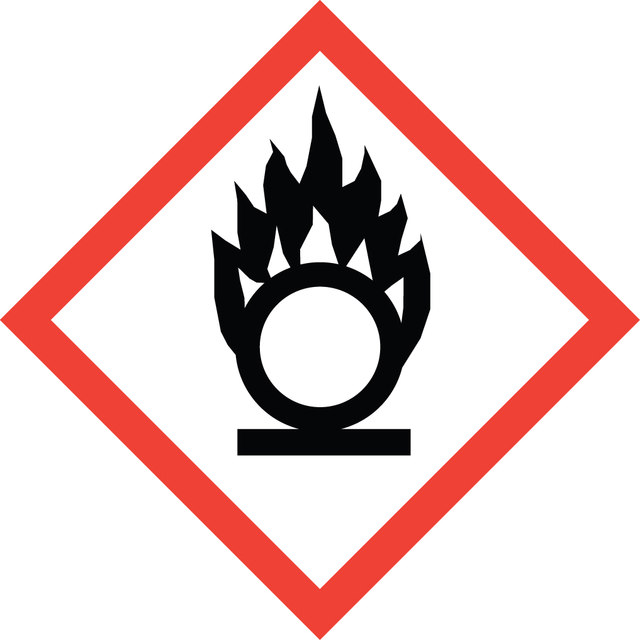Sign In to View Organizational & Contract Pricing
Select a Size
About This Item
Linear Formula:
CO(NH2)2 · H2O2
CAS Number:
Molecular Weight:
94.07
Beilstein:
3680414
EC Number:
MDL number:
UNSPSC Code:
12352111
PubChem Substance ID:
NACRES:
NA.22
vapor pressure
23.3 mmHg ( 30 °C)
Quality Level
Assay
97%
form
solid
reaction suitability
reagent type: oxidant
mp
90-93 °C (lit.)
functional group
amine
SMILES string
OO.NC(N)=O
InChI
1S/CH4N2O.H2O2/c2-1(3)4;1-2/h(H4,2,3,4);1-2H
InChI key
AQLJVWUFPCUVLO-UHFFFAOYSA-N
Looking for similar products? Visit Product Comparison Guide
Related Categories
General description
Urea hydrogen peroxide (UHP) is an oxidizing agent consisting of urea and hydrogen peroxide. In the presence of carboxylic anhydrides, UHP is employed in a variety of oxidative conversions in anhydrous organic solvents. UHP is used as a hydrogen peroxide source in the oxidation reaction.
Application
Urea hydrogen peroxide can be used as an oxidizing agent:
- In the conversion of sulfides to sulfoxides or sulfones under solvent free condition.
- In the conversion of nitrogen heterocycles to their corresponding N-oxides.
- In the epoxidation of various alkene in combination with number of carboxylic anhydrides and disodium hydrogen phosphate in anhydrous organic solvents.
- In the Baeyer–Villiger oxidation reaction where in aldehydes and ketones undergo oxidation to produce esters and lactones using various peroxycarboxylic acids.
Features and Benefits
UHP is:
- Inexpensive.
- Stable.
- Easy handling reagent.
Signal Word
Danger
Hazard Statements
Precautionary Statements
Hazard Classifications
Eye Dam. 1 - Ox. Sol. 3 - Skin Irrit. 2
Storage Class Code
5.1B - Oxidizing hazardous materials
WGK
WGK 2
Flash Point(F)
Not applicable
Flash Point(C)
Not applicable
Personal Protective Equipment
dust mask type N95 (US), Eyeshields, Gloves
Regulatory Information
易制爆化学品
危险化学品
This item has
Choose from one of the most recent versions:
Already Own This Product?
Find documentation for the products that you have recently purchased in the Document Library.
Jiaolong Qin et al.
Journal of hazardous materials, 396, 122762-122762 (2020-05-04)
Reducing the emissions of soil fumigants such as 1,3-dichloropropene (1,3-D) is essential to protecting air quality. Although biochar is useful in reducing such emissions, biochar-adsorbed fumigants may desorb and cause secondary air pollution. This study investigated the degradation of 1,3-D
The Urea?Hydrogen Peroxide Complex:? Solid-State Oxidative Protocols for Hydroxylated Aldehydes and Ketones (Dakin Reaction), Nitriles, Sulfides, and Nitrogen Heterocycles
Rajender SV, et al.
Organic Letters, 1(2), 189?192-189?192 (1999)
Hydrogen Peroxide?Urea
Harry H, et al.
Encyclopedia of Reagents for Organic Synthesis, Second Edition (2013)
Synthesis, 3153-3153 (2006)
Synthetic Communications, 37, 87-87 (2007)
Our team of scientists has experience in all areas of research including Life Science, Material Science, Chemical Synthesis, Chromatography, Analytical and many others.
Contact Technical Service
